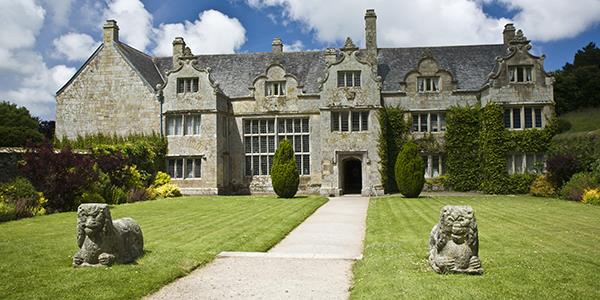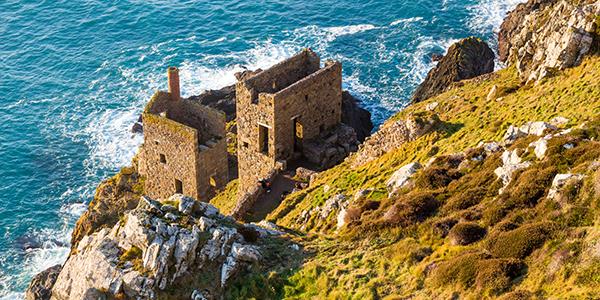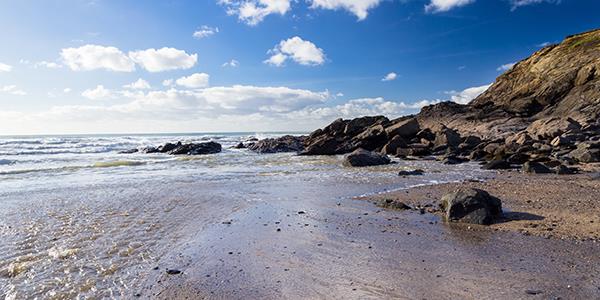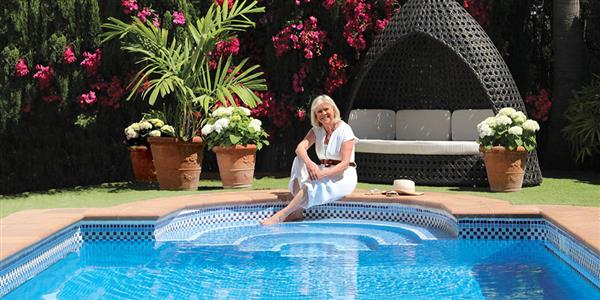
…or if you just really want to see some lovely areas of Cornwall…
As Poldark gets well and truly into its second series on BBC1 this autumn, we can't help but feel drawn in by the programme's spectacular cinematography. Watch one episode and you'll be craving a visit to the UK's dramatic Cornish coast.
Based on the books by Winston Graham and following the lives of the inhabitants of a quiet mining town in 18th century Cornwall, Poldark is a mixture of class politics in Georgian England, and beautiful scenery…
Here are our top 7 places to visit:
1. Charlestown

This historic and traditional-looking little port town near St. Austell on Cornwall's southern coast has long been a favourite destination with film and TV directors. With its quaint architecture and small fleet of tall ships, the picturesque town has been a filming location for the likes of Dr Who (2011), Alice in Wonderland (2010) and Treasure Island (2007) among others.
Now we see it once more as the setting for various Poldark scenes. The harbour is Grade II listed; having been developed in the 18th century and remained relatively unchanged, it lends itself perfectly to Poldark's era. The town features as both the cities of Truro and Falmouth.
2. Trerice

Ok this one is a bit of a cheat. The current programme didn't actually film here, it filmed at a similar looking estate in the Cotswolds called Chavenage. But National Trust-owned Trerice House was used in the BBC's original 1970s Poldark and is said to have been Winston Graham's inspiration for the Trenwith Estate in the books. So it is certainly worth a visit!
This Elizabethan manor is located just a few miles from Newquay and you can explore the elegant rooms and outside in the grounds and gardens. Find out more on the National Trust website.
With the world of the upper classes represented by large manor houses and fancy balls, and the lower class portrayed by the mines and the landscape, the programme taunts us with an image of Cornwall that is undeniably beautiful from all angles. Aidan Turner's Poldark moves between the two worlds – physically – riding the clifftop path between his mine and his cousin's family home…
3. Lizard Peninsula and Gwennap Head

Cornwall is the south-western-most county of England and its position provides incredible viewpoints out to sea. Headlands here were ideal for some of Poldark's wide angle shots where the main character gallops across the horizon. Two notable places used during filming were Gwennap Head, close to Porthcurno and Predannack Wollas, right on the tip of the famous Lizard Peninsula. The Lizard is loved for its wild rocky coastline and abundant flora. It has been designated as part of an Area of Outstanding Natural Beauty and many areas are cared for by the National Trust. Take a look at their suggested walking routes if you fancy really exploring your surroundings > National Trust walks.
4. Chapel Porth, St Agnes Head

The coastline around St. Agnes Head, on the north-facing side of Cornwall, was also used in some of the landscape shots; beautiful backdrops for a horse riding scene! It is another great place for a walk, the unspoiled surroundings are dotted with the remains of old mines and evidence of an industrial past. It is now washed with a sea of beautiful heathland and was used for shots of Poldark's family estate.
5. Poldark Mine

Image: © Copyright Stuart MacInnes and licensed for reuse under CC BY-SA
One of the programme's main themes deals with the conditions and hardships of miners in the 18th century. For the underground scenes where we see the miners hard at work, the crew used Poldark Tin Mine which is actually a tourist attraction, located outside of Helston. You can take a guided tour of the mine, visit the open air museum and have a wander in the gardens. This is an interesting and educational introduction to the mining world of the 18th century.
The mine, which was originally called Wendron Forge was named for Winston Graham's famous character after the original BBC adaptation hit screens in the late 70s.
Tour times and museum opening hours do change, but it's all generally open from 10.30 am during the high season. It closes from November to April. Take a look at the website for more information and prices.
6. Botallack and Levant.

Though the interior mining shots can be a little bleak, the exterior shots in Poldark display incredible beauty. Located on the western edge of Cornwall, National Trust's Botallack mine was used as Poldark's family mine, Wheal Leisure, while Levant mine, just along the coast, also features in the programme. The two sites are now in a state of ruin, perched dramatically on the cliff edge and cared for by the National Trust. For filming the crew recreated the mines as they would once have appeared by building timber structures onto the side of them, and adding the roofs digitally post production.
You can wander the coastline and visit both of these mines in the National Trust's Botallack to Higher Bal walk. Find the full route description here. It's pretty easy going and will take you around three hours to complete.
7. Gunwalloe

Church Cove at Gunwalloe is an attractive inlet on the Lizard peninsula that looks out over the Atlantic ocean. This stretch of coast lies right at the edge of the UK and was notorious for its shipwrecks. Church Cove was fittingly used for the dramatic nighttime shipwreck scene at the end of Season One of Poldark. It is a lovely place to explore during the day – the area is surrounded by dunes and is rich in wildlife. The cove lies close to the towns of Porthleven and Helston. Take a look on the National Trust website.

